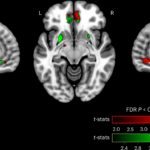 Urbanization—the growth of cities and towns—has been accelerating worldwide. Today, 57% of people live in urban areas, up from 33% in 1960. While cities bring many benefits, such as access to jobs, education, healthcare, and culture, they also pose challenges like noise, pollution, and overcrowding. New research from Michigan State University suggests that neuroscience could help design cities that improve people’s well-being.
Urbanization—the growth of cities and towns—has been accelerating worldwide. Today, 57% of people live in urban areas, up from 33% in 1960. While cities bring many benefits, such as access to jobs, education, healthcare, and culture, they also pose challenges like noise, pollution, and overcrowding. New research from Michigan State University suggests that neuroscience could help design cities that improve people’s well-being.
The study focuses on how the brain’s reward system shapes behavior in urban spaces. This growing field, called “neurourbanism,” looks at how city environments affect our thoughts, feelings, and actions. By understanding these effects, planners can create cities that are not only functional but also enjoyable to live in.
How we make decisions
Using brain scans, the researchers studied a region of the brain called the ventromedial prefrontal cortex (vmPFC), which helps us assess value and make decisions. Earlier studies have shown that this area can predict group behaviors, like food choices and music trends. For this study, 77 people in the U.S., none of whom had been to Lisbon, Portugal, were asked to rate photos of different spots in the city. The researchers used Flickr photos tagged with each location to measure how popular these areas were with visitors.
The results showed that the more activity the photos triggered in the vmPFC, the more likely people were to want to visit those spots. Interestingly, the attraction wasn’t just about looks. People were drawn to areas that had cultural or historical significance, even if they weren’t visually stunning.
This suggests that designing cities isn’t just about making them beautiful. It’s also about creating spaces that connect with people on a deeper level—whether through their history, culture, or social importance.
By combining neuroscience with urban planning, cities could become more welcoming and efficient. Understanding how people respond to their surroundings can help planners build environments that make life easier and more enjoyable for everyone. The researchers believe this approach could lead to cities that are better at meeting people’s needs and promoting health and happiness.